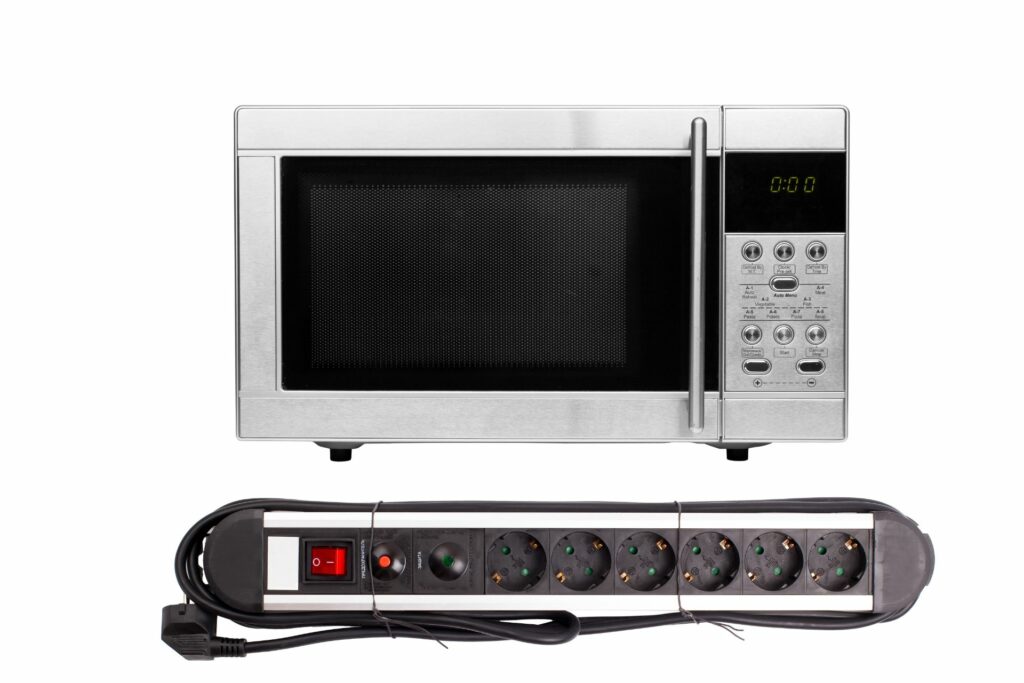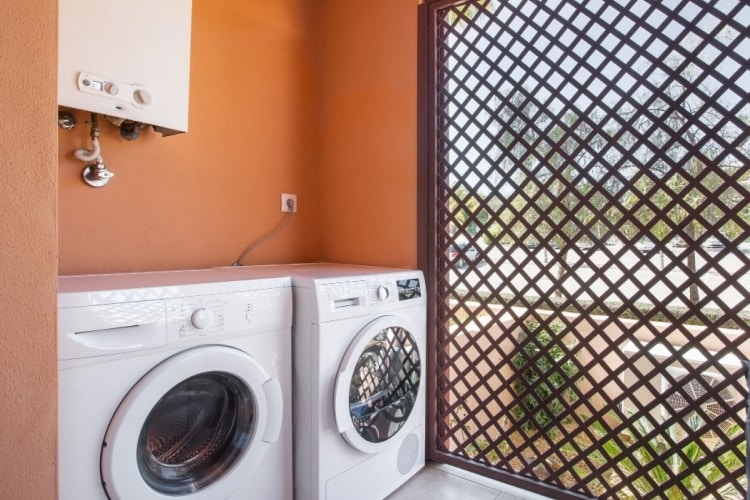Finding an outlet to plug in every device within the house is challenging, especially in the kitchen.
Sometimes we enjoy toasting bread, brewing coffee, and reheating bacon at the same time, yet most rooms have only two outlets, usually dedicated to the fridge and oven.
So where do we plug the microwave, coffee machine, and toaster? The first thing that typically comes to mind is purchasing a power strip or surge protector.

Power strips and surge protectors are gadgets you’d typically use if you need extra outlet space. Yet, they are notorious for catching on fire if overloaded with more electricity than they can handle.
This article will investigate how well surge protectors support kitchen appliances, particularly microwaves. Is it risky to connect a microwave to a surge protector or not? Let’s find out.
Plugging a Microwave Into a Surge Protector: Yay or Nay?
We don’t recommend plugging a microwave into a surge protector. For safety reasons, it’s always preferable to plug a microwave directly into a wall outlet because it generally consumes more energy than a surge suppressor supports.
The National Electrical Code advises that appliances with a wattage of over 1,000 should have a dedicated outlet and circuit. Since the power range of a microwave is between 600 and 1800 watts, it’s one of those high-wattage appliances that need their own designated outlet. In the section below, we’ll explain in which conditions your microwave consumes 600 or over 1000 watts of power.
Multi-outlet surge protectors and power strips commonly cause household fire hazards. The reason behind their safety problems is that most people buy devices of poor quality, which cannot sustain multiple appliances – not even one if it uses a lot of energy.
Plugging a microwave into a surge protector will overheat the surge protector and the power socket, which is dangerous. So whichever way you look at it, it’s a big no-no.
The Importance of Dedicated Circuits for Kitchen Appliances
Kitchens are equipped with motorized and heating appliances that are infamously high-consumption devices.
When more than one kitchen appliance is connected to a surge protector and into a single outlet, there is a high possibility that it’ll use more electricity than the circuit is intended to handle.
If that happens, the insulation may dissolve and overheat the wires. Ultimately, a brief spike of power will be enough to start a fire.
So, better to be safe than sorry, right? Let’s not plug microwaves into surge protectors and power strips alone or with other devices. Instead, opt for their dedicated outlet and circuit.
A dedicated circuit concentrates all of its power on a single device — in this instance, the microwave — and thanks to this power balance, it will protect both your microwave and you from electrical harm.
Other Appliances Unsuitable for a Surge Protector

The National Electrical Code mandates that every high-wattage device needs a dedicated outlet and must not be mixed with any other appliances on a surge protector or power strip.
The microwave is one example, but not the only one. Here is a rundown of common household high-wattage appliances that need their own circuit.
- Fridge
- Garbage disposal
- Washing machine
- Dryer
- Stove/Oven
- Freezer
- Air Conditioner
- Water heater
- Toaster oven
What Affects How Much Electricity a Microwave Draws?
Your microwave won’t draw equal amounts of power each time you use it. How much wattage microwaves use depends on several things.
For starters, the energy volume consumed depends on the oven size. A bigger-sized microwave will draw more electricity from an outlet than a smaller one. The reason is the fact that heating a bigger area requires more energy.
The length of the heating process will also affect how much electricity is used from the outlet. If we need to cook something that takes longer to prepare, the microwave will draw more power during the cooking process. For example, cooking pasta or meat will take more time (and more electricity) than, let’s say, popcorn.
Plugging a Microwave Into a Power Strip
Powering a microwave into a power strip isn’t a good idea. Power strips function the same as surge protectors, except that power strips don’t protect devices from a surge. Instead, they only provide additional outlet space.
Your microwave should never be connected to a power strip, regardless of its size and what type of food you’re cooking inside. Power strips are not designed to handle the high wattage used by microwaves.
Power strips are made for lighter power loads. For instance, a power strip may be helpful if you plug in your digital clock, cellphone, and table lamp. In other words, devices with low wattage power can be close to one another.
Conclusion
In conclusion, a microwave is a household device that uses a lot of energy. As a result, it needs its circuit and outlet. Since this appliance requires a separate outlet, chances are that a surge protector wouldn’t be able to handle its high wattage power, especially not if it’s plugged in with other kitchen appliances.
Never plug high-wattage devices together, like dishwashers, fridges, freezers, and ovens on surge protectors to prevent a potential fire hazard. Always — and we mean always — have a dedicated outlet for these devices.
It’s preferable to temporarily unplug other appliances and plug in the microwave when you need to use it but don’t have an open outlet. Instead of taking the risk of an electric overload, use this much better approach!